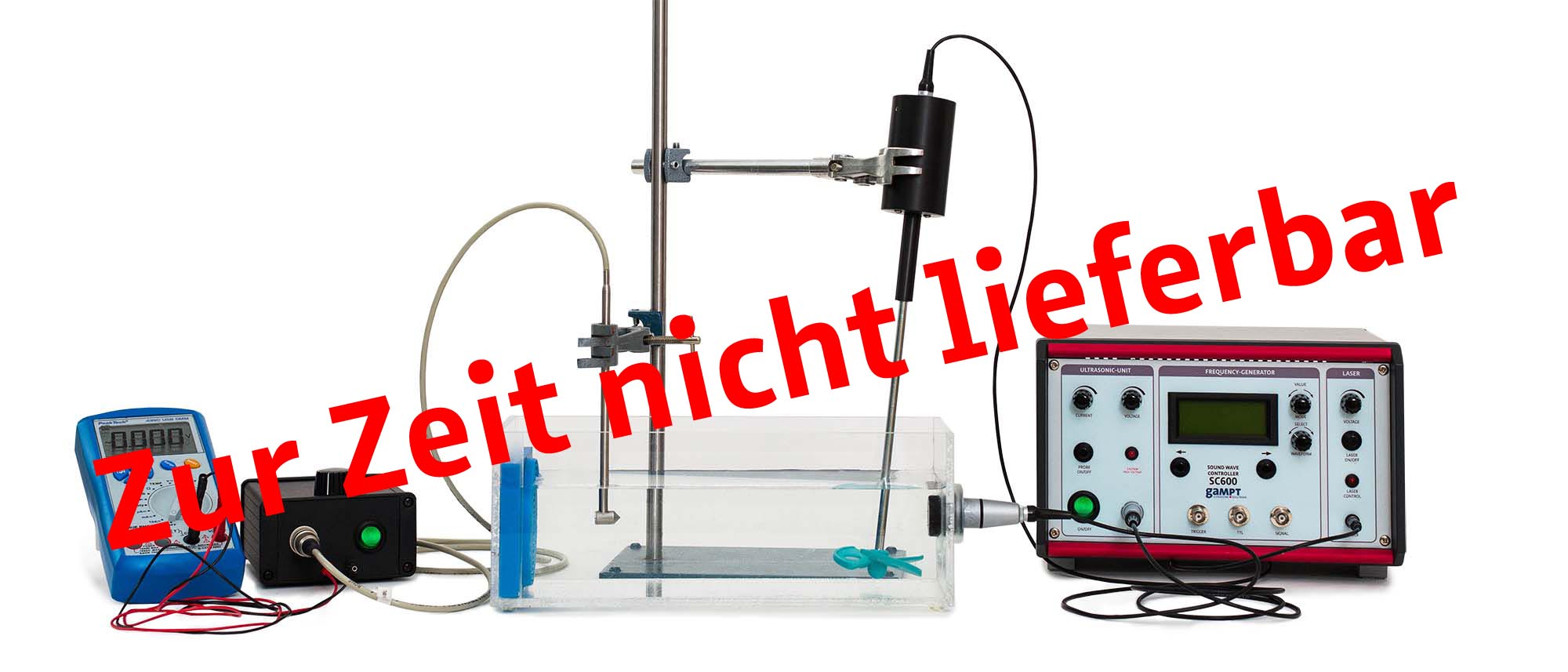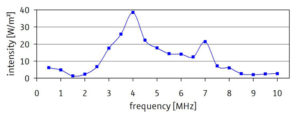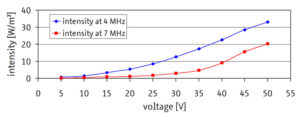Article No. VK-PHY24
PHY24 Thermoacoustic sensor
Introduction into the problem of the power measurement of ultrasound using the example of the thermoacoustic sensor
- Subject matter of the experiment
- Theoretical and practical aspects of the experiment
- Results
- Equipment
- Related Experiments
The experiment is an introduction into the problem of the power measurement of ultrasound, using the example of the thermoacoustic sensor. The connections between the acoustic parameters and the significance of sound power measurements for dosimetry in diagnostic and therapeutic ultrasonic applications are discussed.
Keywords: Acoustic energy parameters, sound pressure, sound particle velocity, sound intensity, sound power, ultrasonic dosimetry, thermoacoustic sensor
Ultrasonic intensity measurements are of decisive importance for patient safety in the quality assurance of therapeutic ultrasonic sources. The thermoacoustic sensor offers a simple option for the otherwise laborious measurements of sound intensities by means of hydrophones and acoustic radiometers. The sensor is based upon the conversion of the incident sound energy into heat inside a small absorber. This way the sound intensity can be measured as a temperature change in the absorber material by means of a thermocouple. The sensor is structured as a bridge circuit so that external temperature influences can be compensated for. The temperature change is output via an amplifier circuit as a voltage value. In the experiment, the emitted sound intensity of an ultrasonic probe is measured at different frequencies and different exciting voltages. Problems of sound generation with piezoelectric ceramics, resonance effects and propagation phenomena such as near field length and standing waves are discussed. The emitted sound intensity of the probe is calculated based upon the calibration curve of the sensor. Because the energy conversion in the sensor is frequency-dependent, the measurement values must be correspondingly corrected.
For the multifrequency probe, the sound intensities have been determined at different frequencies. The measurement shows two intensity maxima which result from the overlaying of the frequency responses of the probe and of the generator. For both resonance points, the ultrasonic intensities were measured in dependence on the exciting voltage.
| Ord.no. | Description |
|---|---|
| 20100 | cw generator SC600 |
| 20139 | Multifrequency probe |
| 20227 | Acoustic absorber |
| 20400 | Thermoacoustic sensor |
| 20430 | Measuring reservoir |
| 20450 | Stirrer for SC500/SC600 |
| 10310 | Tripod set |


